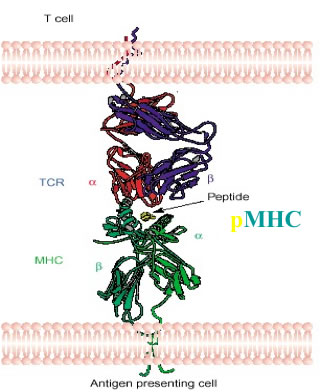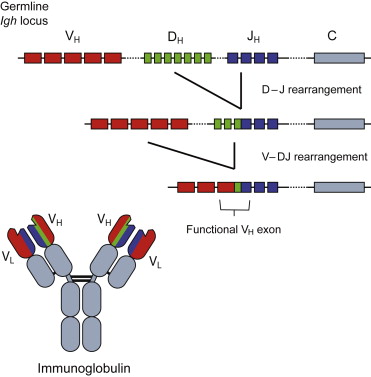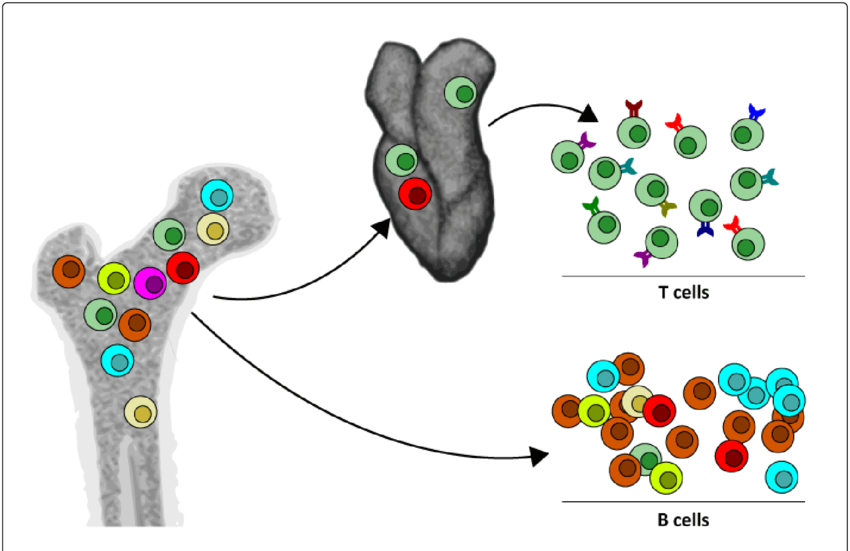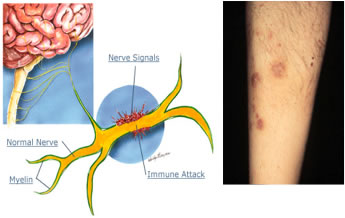Adaptive Immune System
![]() The adaptive immune system has evolved to protect vertebrates from the everchanging landscape pathgens.
The adaptive immune system has evolved to protect vertebrates from the everchanging landscape pathgens.
![]() Two arms of the adaptive immune defense:
Two arms of the adaptive immune defense:
B cells (antibodies target pathogens) & T cells (target infected cells) [slides from A.K.Chakraborty]
![]() T cells recognize (self) cells harboring pathogen:
T cells recognize (self) cells harboring pathogen:
Antigen presenting cells (APCs) internally process self and foreign proteins, cut them to short peptides (8-15 amino acids).
The peptides are presented on APC surface, attached to protein MHC.
T cell receptors (TCRs) recognize pathogen peptides by binding to them strongly.
![]() T cell receoptors (TCRs) & B cell receoptors (BCRs) must be
T cell receoptors (TCRs) & B cell receoptors (BCRs) must be
Diverse: to recognize an evolving landscape of pathogens
The process of V(D)J recombination (video) in bone marrow, may generate generate more than 1013 distinct receptors.
Quantifying selection in immune receptot repertoires, Elhanati, Murugan, Calan, More, Walczak, PNAS (2014)
Self-tolerant: to avoid auto-immune diseases
Specific: to lock on specific pathogens for immunological memory (vaccination)





